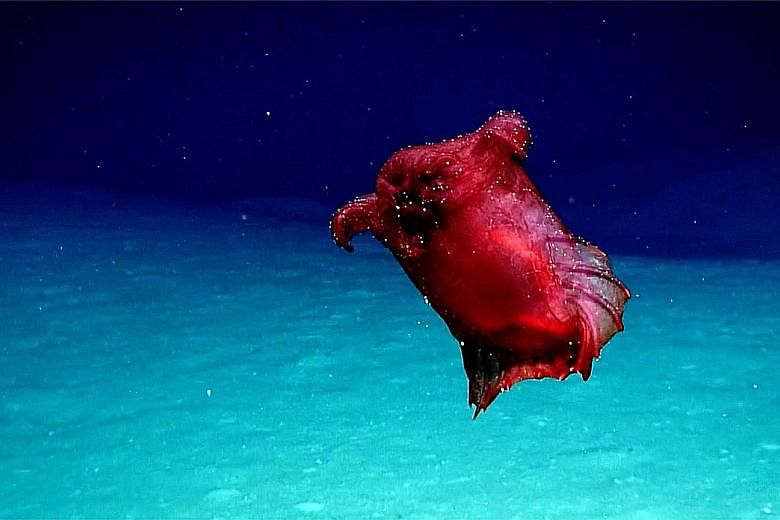What lives a mile under the sea, has tentacles and fins, and looks like a decapitated chicken ready for roasting?
The headless chicken monster, of course.
Yes, that is actually the name of a rare creature caught on film this week by researchers working in the Southern Ocean, about 4,000km off the south-west corner of Australia.
The "monster" - actually a sea cucumber that helps to filter organic matter on the ocean floor - has been caught on film only once before, last year in the Gulf of Mexico.
Floored by its unusual physique, scientists call it the headless chicken monster. It is also known as the swimming sea cucumber, the Spanish dancer and Enypniastes eximia - its scientific name.
"It looks a bit like a chicken just before you put it in the oven," said Dr Dirk Welsford, programme leader for the Australian Antarctic Division, who was among the researchers to spot the animal off the coast of Antarctica.
As part of a project to explore the impact of fishing on sensitive marine ecosystems, he and his team attached specially designed cameras to fishing lines dropped to depths of 3km.
"We had no idea what it was," he said upon seeing footage of the creature for the first time.
Unlike most sea cucumbers, the headless chicken monster has fins, which allow it to swim upwards to escape predators.
"From a research point of view, it's very interesting because no one has seen that species that far south before," he said, adding that discovering it near Antarctica could help scientists understand the species' distribution and how it might be affected by climate change.
While sightings of the sea cucumber go back to the late 1800s, scientists have "absolutely no idea" how many there are in the world's oceans, Dr Welsford said.
It is "an amazing reflection of how little we know about the deep ocean".
Understanding which parts of the seafloor are home to unique marine life is crucial to determining the best locations for sustainable fishing.
The sighting of the sea cucumber, Dr Welsford added, showed there was an opportunity to use cheap, compact technology to "get a better picture" of life on the seafloor. "The deep ocean habitat is enormous and we've done so little research. It's very early days."
NYTIMES

